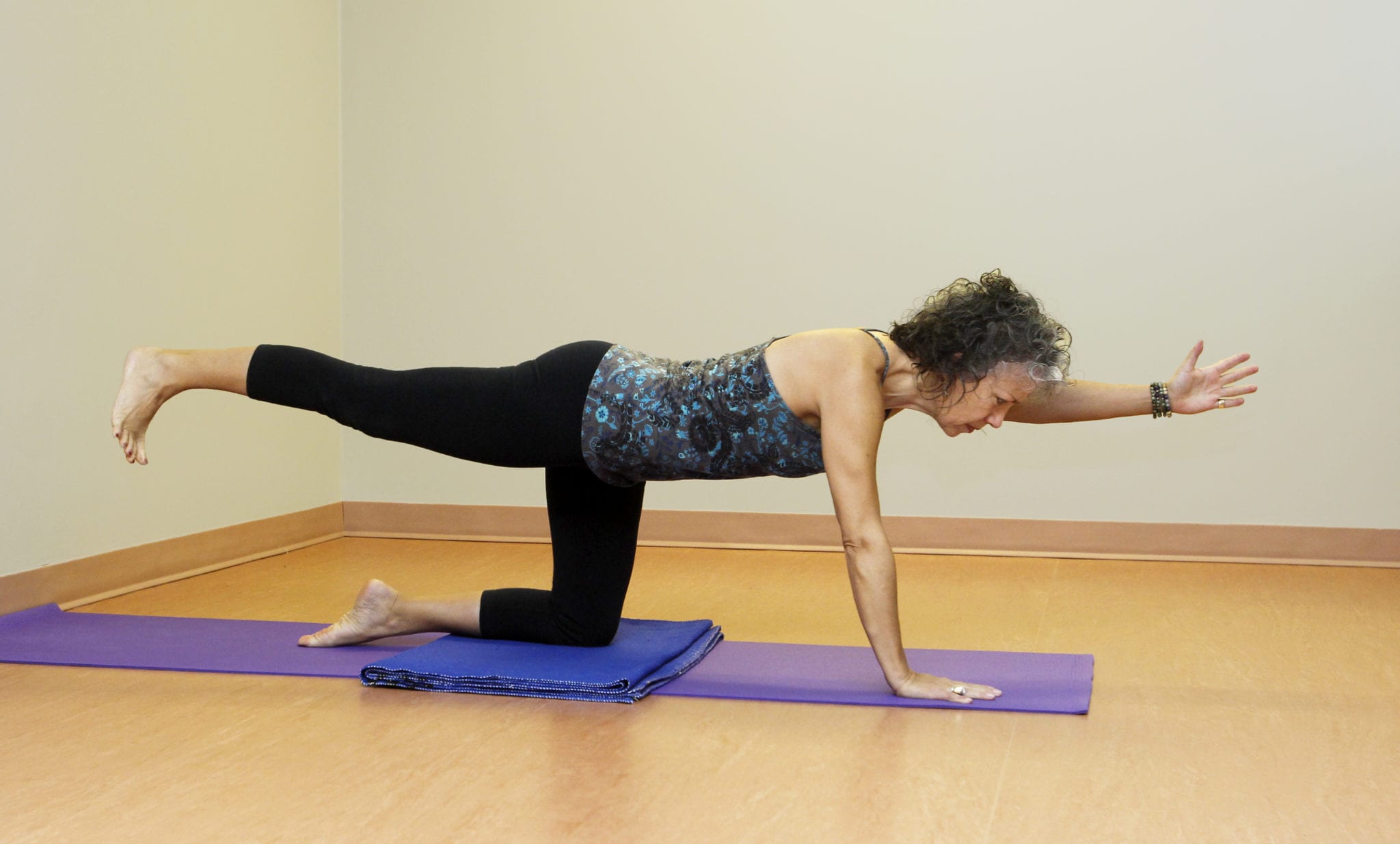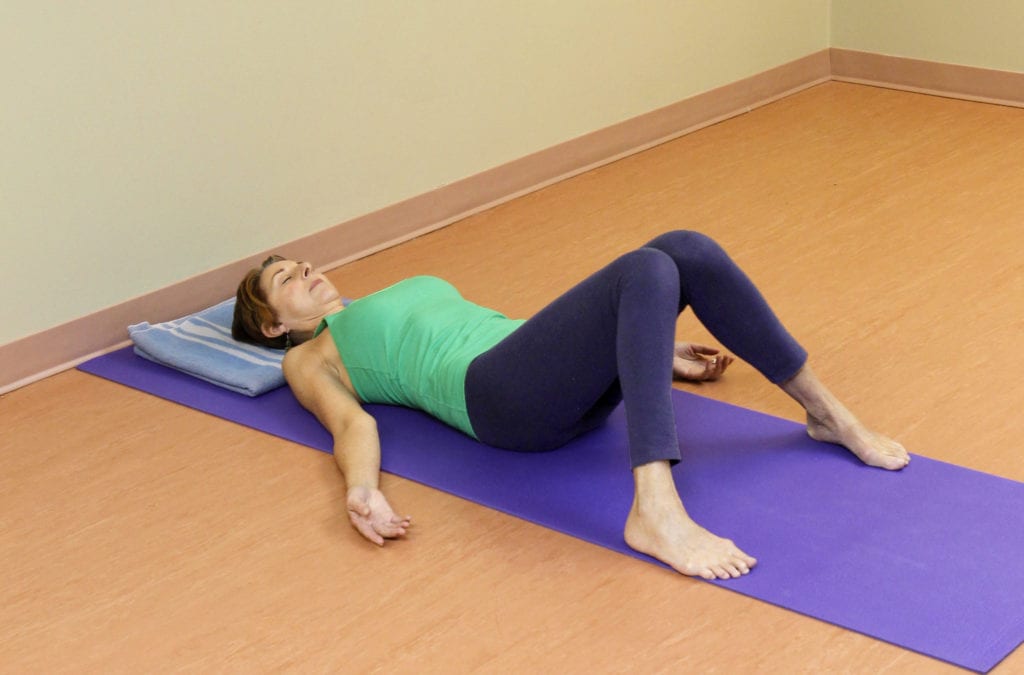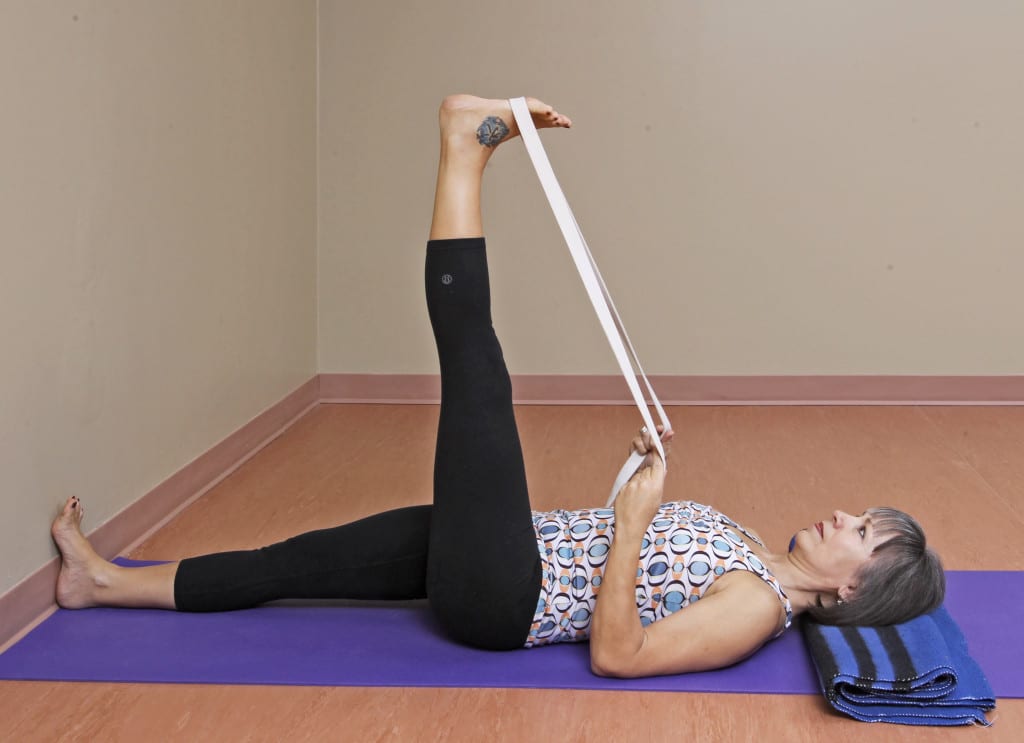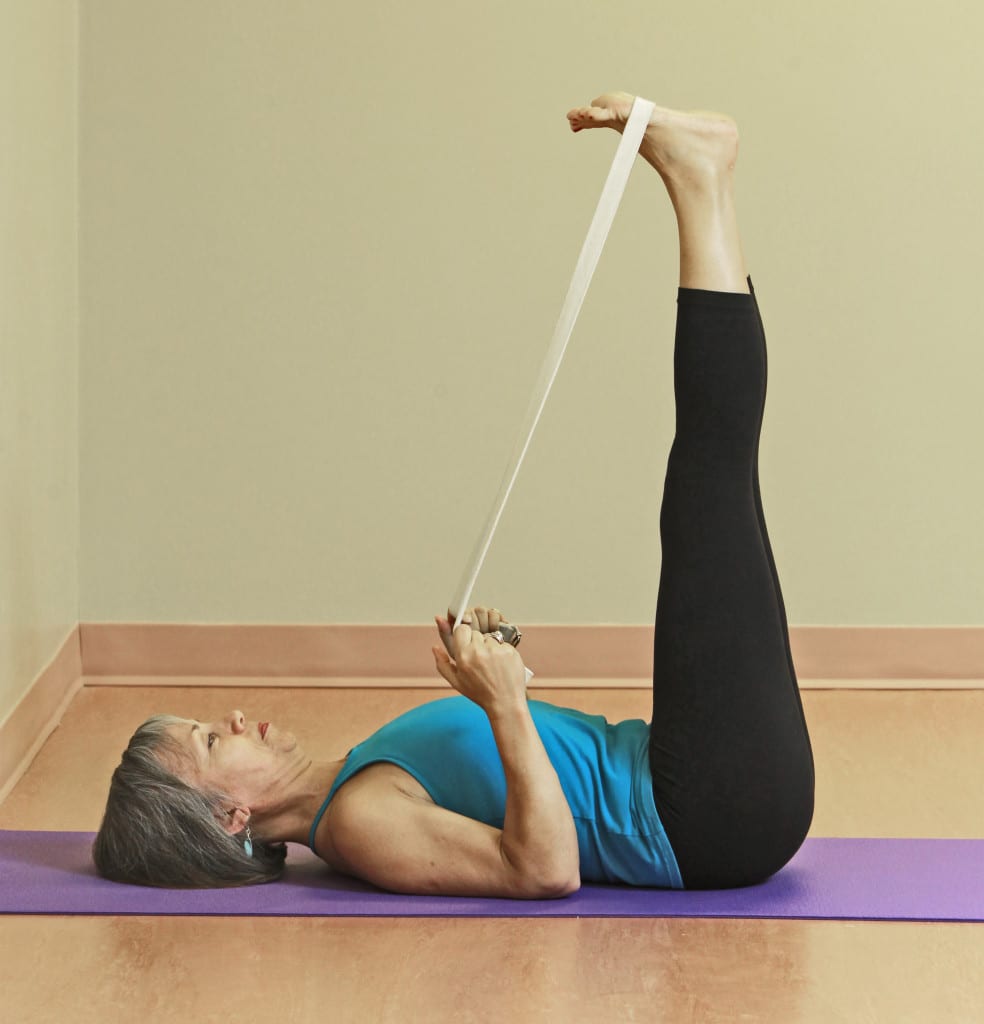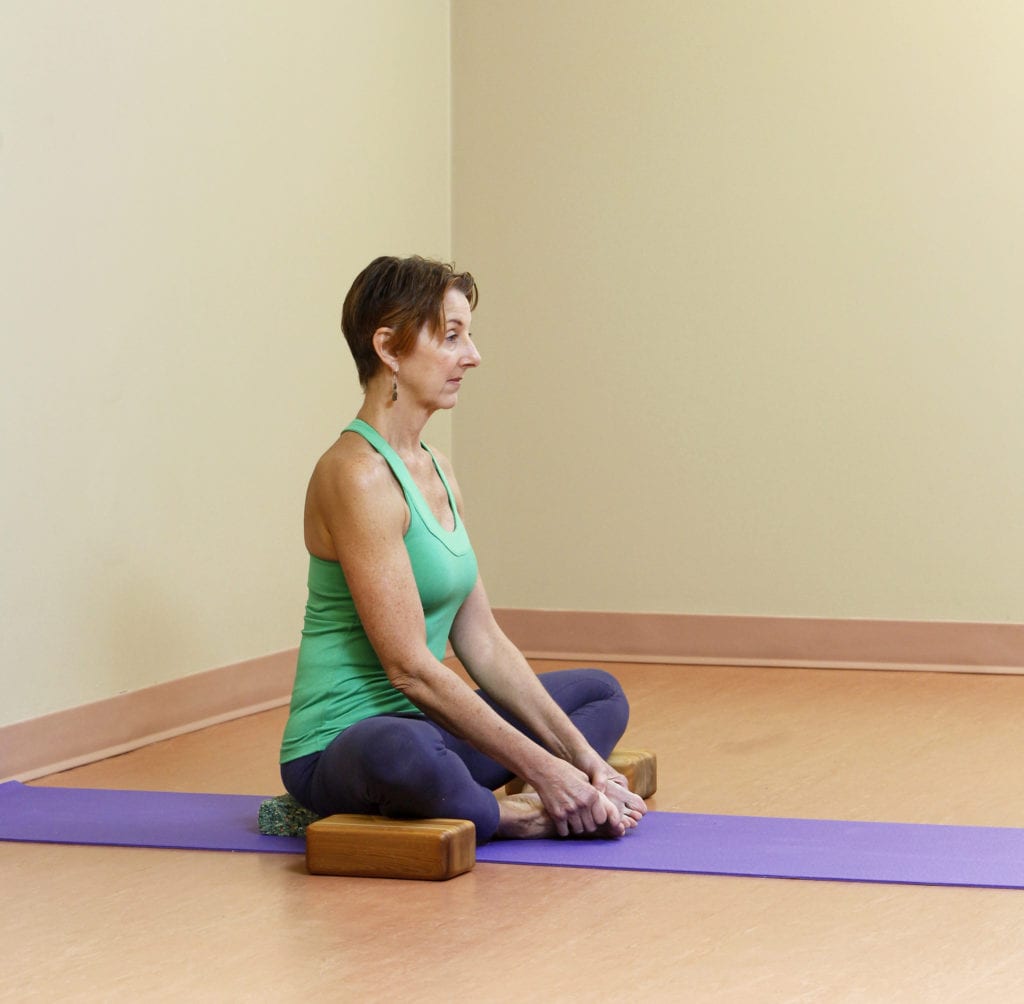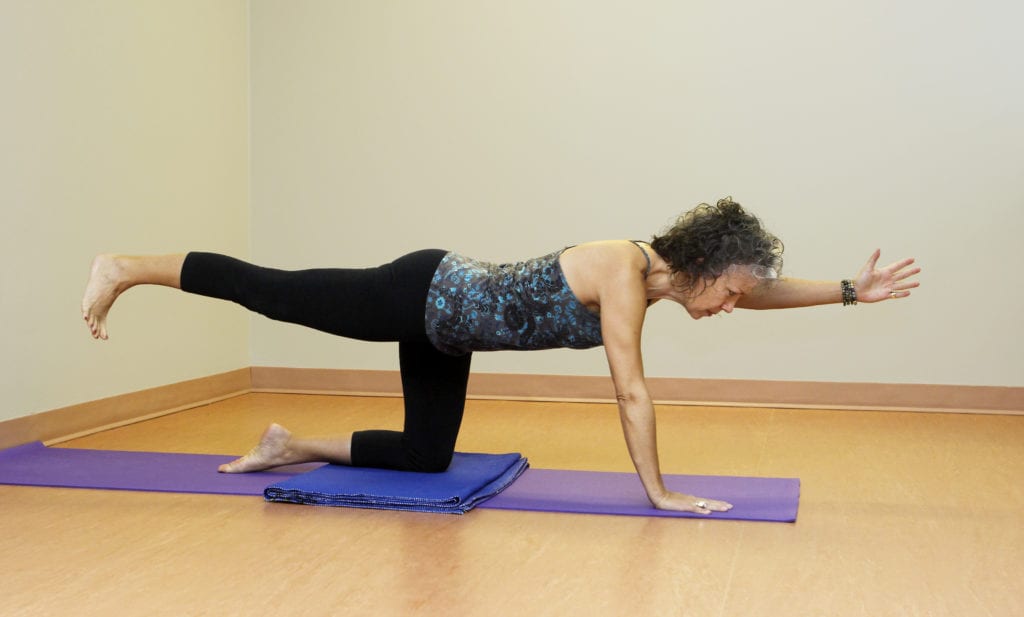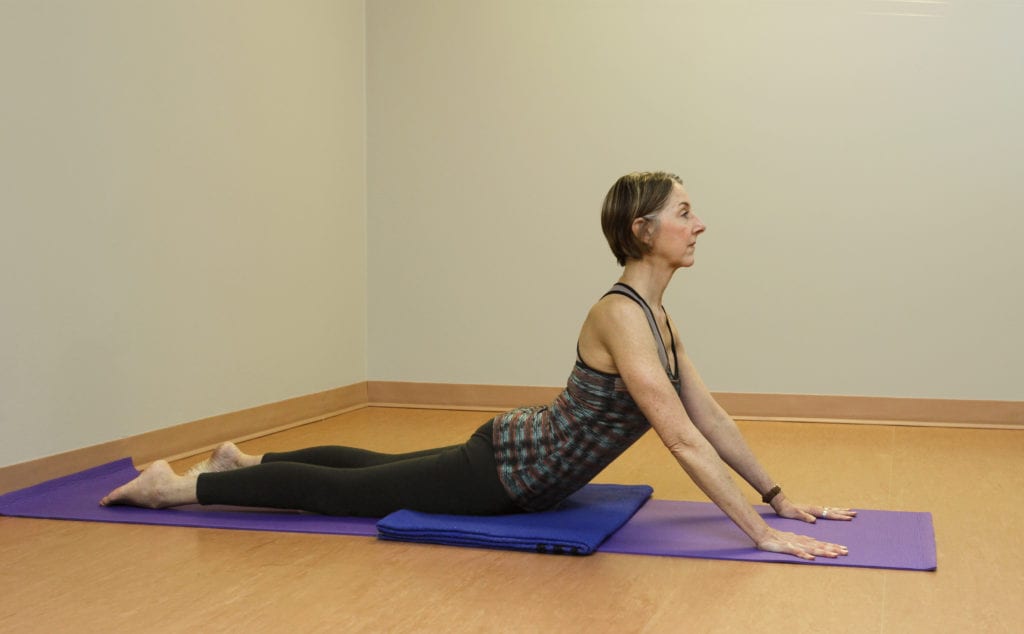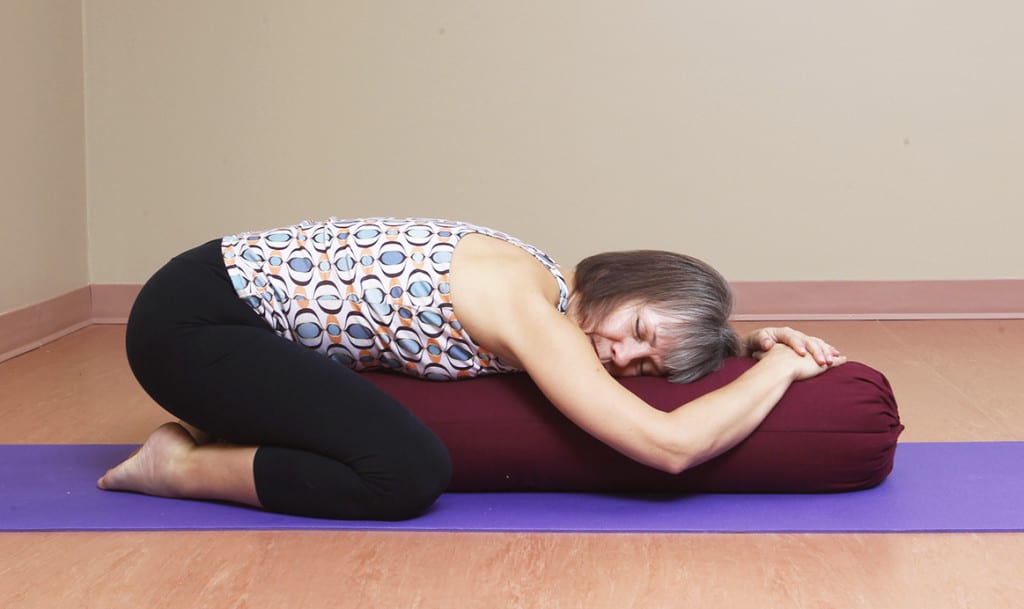As our bodies age and physical habits become even more deeply ingrained, the once-perky heart-shaped buttocks of our youth tend to move in one of two directions — toward flat and flabby or tight and tense. Neither too flabby nor too tight are the ideal conditions. Much like Goldilocks, we want to find the middle ground between too hot (buns of steel) and too cold (a “lost bottom”).
Let’s not deny the fact that the appearance of our buttocks is a high priority for many of us. Regardless if the reason is vanity, yogis know that keeping our butt firm and flexible is vital in maintaining healthy safe movement and posture. The primary players in accomplishing these benefits are our gluteus muscles — minimus, medius and maximus. Due to our sedentary lifestyle, these muscles are often overstretched from long spells of sitting. Such underused and overstretched glutes are too weak to do what they were designed for — support the pelvis and hips, stabilize the head of the thigh bone in its socket and move the legs internally, externally, backward and forward. Weakened gluteus muscles must then rely on other muscles — quadriceps and hip flexors — to compensate creating further imbalances in how we move and stand.
On the other hand, overworked gluteus muscles or buns of steel are equally as problematic. As yoga teachers, one of the most common physical reactions we see in our students’ bodies is butt clenching. As it is said, the proof is in the pudding. So, the next time you experience intense emotion — stress, fear, anger, etc. — PAUSE, and mindfully notice your buttocks. What you will likely discover is clenching and gripping. On the whole, we tend to be an uptight culture and in need of release and relaxation.
For many people, gripping their buttocks is a constant state, which can and does dramatically impair the surrounding tissue. Hence, the increasing problems associated with lower back pain, hip impingement, spinal injury and poor posture. So ingrained is the butt clenching habit that it may take several months or years for a conscientious yogi to right the damage. Don’t lose faith because correction in the form of a firm and flexible derriere is possible.
Firm and flexible glutes provide the much-needed support for balancing and stabilizing a neutral pelvis. Too much tilt or tuck in the pelvis results in a lordotic or flattened spine, respectively. A neutral pelvis creates the conditions for our bones to appropriately stack one upon the other, which takes considerable weight and tension off the spine. The yoga actions below are meant to awaken our sleeping glutes and/or relax our buns of steel so we can experience the benefits of a neutral pelvis.
Action: Release your buttock flesh from below your back waist down toward your sits bones. For more advanced practitioners, lift and firm your upper hamstrings (attached to the sit bones) to meet your descending buttocks.
SAVASANA (Corpse Pose)
Lie on your back with your knees bent and outer edges of your feet along the outer edges of your mat. Press into your feet and slightly push yourself towards your head in order to help find the action. Notice how the buttock flesh draws down to the sit bones, and the hamstring attachments firm. Stay for 3-5 breaths.
SUPTA PADANGUSTHASANA I (Lying Down Hamstring Stretch I Pose)
Lie on your back with your feet firmly into the wall. Bend your left knee and place a belt around the pads of your foot. Find the action in both buttocks as you straighten your leg upward. Stay for 5-10 breaths then release your left leg and repeat with your right leg raised.
SUPTA PADANGUSTHASANA (Lying Down Hamstring Stretch Pose variation)
From the previous pose, bend both knees and place a belt around the pads of both feet. Find the action in both buttocks as you straighten your legs upward. Stay for 5-10 breaths.
BADDHA KONASANA (Bound Angle pose)
Sit either on the floor or a height that allows you to keep your spine lifting effortlessly. You may also use the support of the wall for your back. Bend both knees out to the side and bring the soles of your feet together. Add support under your knees if there is discomfort in your hips or knees. Find the action and stay for 10-15 breaths or 5 minutes if you are able.
POINTER DOG
Begin in Table Top position (hands and knees). Find the action in both buttocks and maintain it as you extend your right leg behind you and your left arm in front. Hold for 3-5 breaths, release into “all 4’s” once again and then repeat on the other side.
BHUJANGASANA (Cobra pose)
Begin lying on your front body with your forehead or chin to the floor. Place your hands by the side of your head or under your shoulders depending on the flexibility in your spine. Find the action in your buttocks, maintain it as you press into your hands, and then begin to straighten your arms while lifting your breastbone toward your chin. Hold for 3-5 breaths. Rest and repeat 2 more times.
BALASANA (Child’s pose with bolster)
From “all 4’s”, bring your big toes together and take your knees mat-distance apart. Sit onto your heels and keeping the contact between your sit bones and heels, lie your body over the bolster. If you cannot keep your sits bones resting onto your heels, place one or two blankets onto the bolster to bring your torso into a horizontal position. Stay for 3-5 minutes turning your head halfway through.
 Winnipeggers Helen Maupin (www.righttojoy.com) and Candace Propp (www.natureofcontentment.com) are certified senior yoga teachers and authors of the Creating Space: Yoga Actions book series. To purchase these print or ebooks, visit here. For yoga teacher training (200- & 500-hour) with them and Stacy Schroder or to purchase the Yoga Actions teacher training facilitator manuals and student handbooks contact www.sereneyogastudio.com.
Winnipeggers Helen Maupin (www.righttojoy.com) and Candace Propp (www.natureofcontentment.com) are certified senior yoga teachers and authors of the Creating Space: Yoga Actions book series. To purchase these print or ebooks, visit here. For yoga teacher training (200- & 500-hour) with them and Stacy Schroder or to purchase the Yoga Actions teacher training facilitator manuals and student handbooks contact www.sereneyogastudio.com.
Photos: Wayne Glowacki

